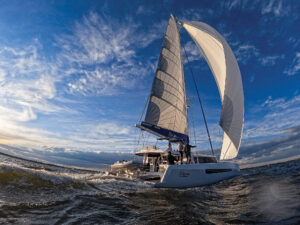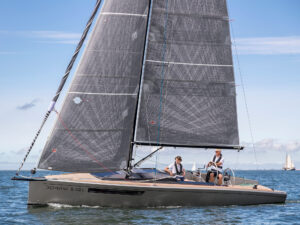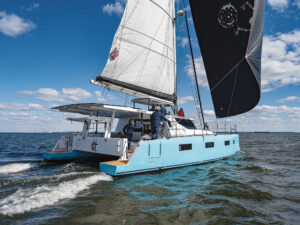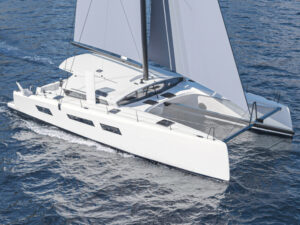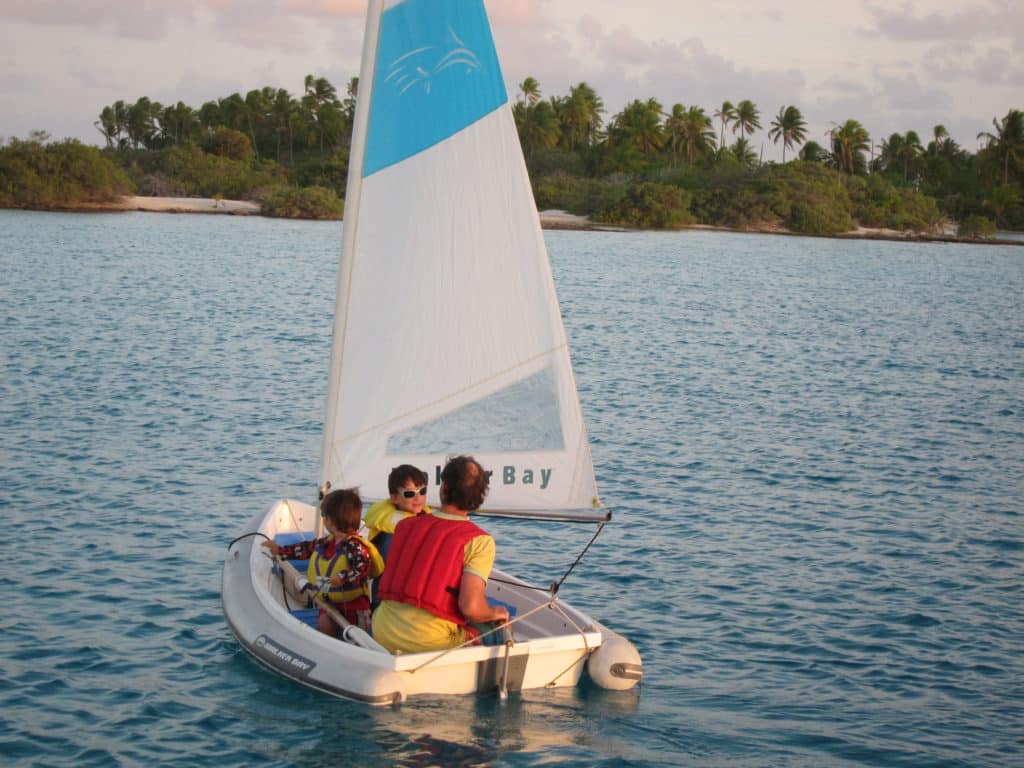
When we bought Galactic, our 45-foot cutter, it came with an 8-foot sailing dinghy that we called Little Dipper. During two crossings of the Pacific, that dinghy took our sons Elias and Eric zipping over turquoise water to pristine beaches and taught them how sailing could be a way to explore the world. And for Elias, who sailed Little Dipper from the age of 4 to 8, it was also the vehicle for a blossoming independence as he made the transition from passenger to captain of his own solo voyages. For years, we were in the habit of hanging our dinghies on halyards to make sure they didn’t go walkabout in the dark. But during our haulout in Chile, I noticed how scratched the topsides had become where the dinghy slid up and down, and I started leaving the dinghy in the water at night. And so one morning arrived, in the beautiful anchorage of Estero Pailad, on Isla Grande de Chiloe, when we went on deck and found only a neatly cut painter where Little Dipper had been.
In that moment, all of our darkest prejudices about the sailing life and people were confirmed. My wife, Alisa, and I came to the conclusion long ago that the challenges of being alone in a tough environment were nothing in comparison to the challenges of dealing with people when we travel. Our happiest moments have been at sea, and our loneliest on some strange shore where something has gone wrong because of what someone else has done. At Estero Pailad, it all became inescapably clear.
But in addition to confirming our dystopian view of land life, the theft of our dinghy was an operational problem. We were about to head south to Patagonia in the wintertime. Worry-free anchoring in Patagonia involves lines tied to stout trees. That means rowing a dinghy as fast as you can into a rocky shore adorned with sharp mussels and barnacles, chucking out an anchor and leaping onto land, leaving the dinghy to look after itself while you clamber up to the nearest suitable tree to make the line fast.
We really liked the idea of a robust hard dinghy for that application. And, given our plan to spend a year in Patagonia, we really liked the idea of having two dinghies on board. Patagonia just seemed like the place to have a backup.
When we returned to the town of Puerto Montt to make our final preparations for heading south, Alisa went into high gear, searching for a replacement. This wasn’t easy. Weeks of asking around gave Alisa only one lead, a sailing dinghy that was owned by the commodore of the Puerto Montt marina. But he was unwilling to sell.
And then Alisa noticed a motorcruiser at the dock, named Pelagic, just like our first cruising boat. On a custom-made cradle on this Pelagic rested a jaunty little rowing dinghy that looked like it might fit perfectly in the spot between our mast and forestay.
Alisa kept an eye on Pelagic, and eventually she met the owner — a Chilean named Fernando who made his fortune in the aquaculture business.
She asked Fernando about buying his dinghy — and couldn’t quite understand his reply. Eventually, I met up with Fernando, and with my slightly less bad Spanish, asked if he might be interested in selling his dinghy.
This question provoked a long answer from Fernando. Like, an answer longer than this story. Some Chileans, I found, were able to dumb down their Spanish to talk with me. Not so Fernando. He launched off into sentence after sentence of vernacular Chilean Spanish, speaking to me like he would to any other intelligent adult. Which, when speaking to me in Spanish, is not the correct approach.
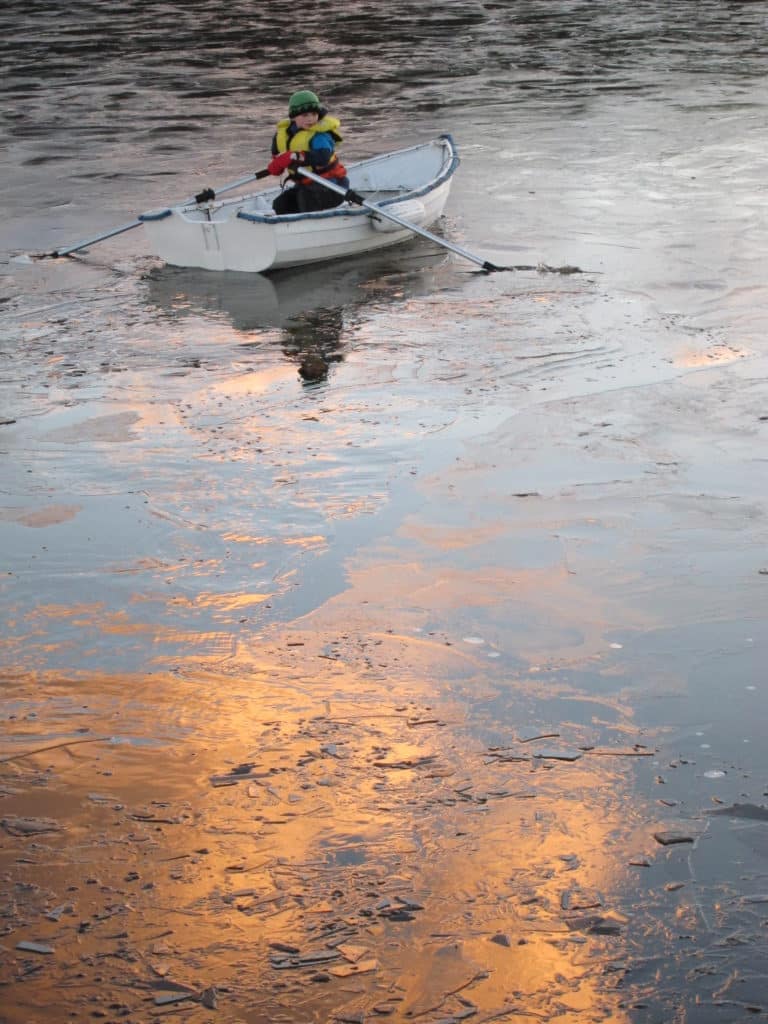
But I thought I heard Fernando say he would just give us the dinghy. Later I talked it over with Alisa. Surely he wasn’t giving us the dinghy? And how could we possibly ask if that’s what he meant without sounding grasping?
Alisa continued to run into Fernando now and again in the marina. He seemed to be very apologetic about the dinghy for some reason. Was he apologizing because he couldn’t find the oars and the sailing rig? We didn’t care about that — we just wanted the boat. We’d gladly buy it from him. But he was on one schedule, and we were on another. His Pelagic was a pleasant diversion from his hectic life of business and family. For us, preparations for the cruise that we were about to make to Tierra del Fuego in the depths of winter were the focus of our world. The weather was holding fine, and we were eager to be going south. From our years in Alaska we knew how vitally important it was to get everything about our traveling set up as nearly perfect as possible before we set off. Alisa, in particular, was determined that we would sail south from Puerto Montt with a hard dinghy strapped to our deck.
Our breakthrough came when Fernando showed up at Galactic one evening with a young French traveler. The French guy had spent a year traveling by horseback in remote Patagonia. His Spanish and his English were quite good. And with his help, Fernando was able to explain that he was very happy to give us his dinghy, and to imagine our kids rowing it around during our trip through his country. And no, he was absolutely not interested in selling. He wanted to give it to us. For the boys’ sake. Alisa was the one who found the teachable moment for our boys. “We just saw the worst of people, in whoever stole our boat,” she said to them, “and now the best, in this man, Fernando, who just gave us his dinghy because he knew we could use it.”
Alisa was right. Time and again in our travels, we have been humbled by the generosity of people we have met by chance, known for a short time and then never seen again. And for all that we love about solitude, it is the moments spent with those better sort of people who have given us our very best memories of a decade of sailing.
When we set out from Puerto Montt, we left with a hard dinghy strapped to our deck.
And we called that boat Fernando.
Get in touch with Mike at thelifegalactic.blogspot.com.

